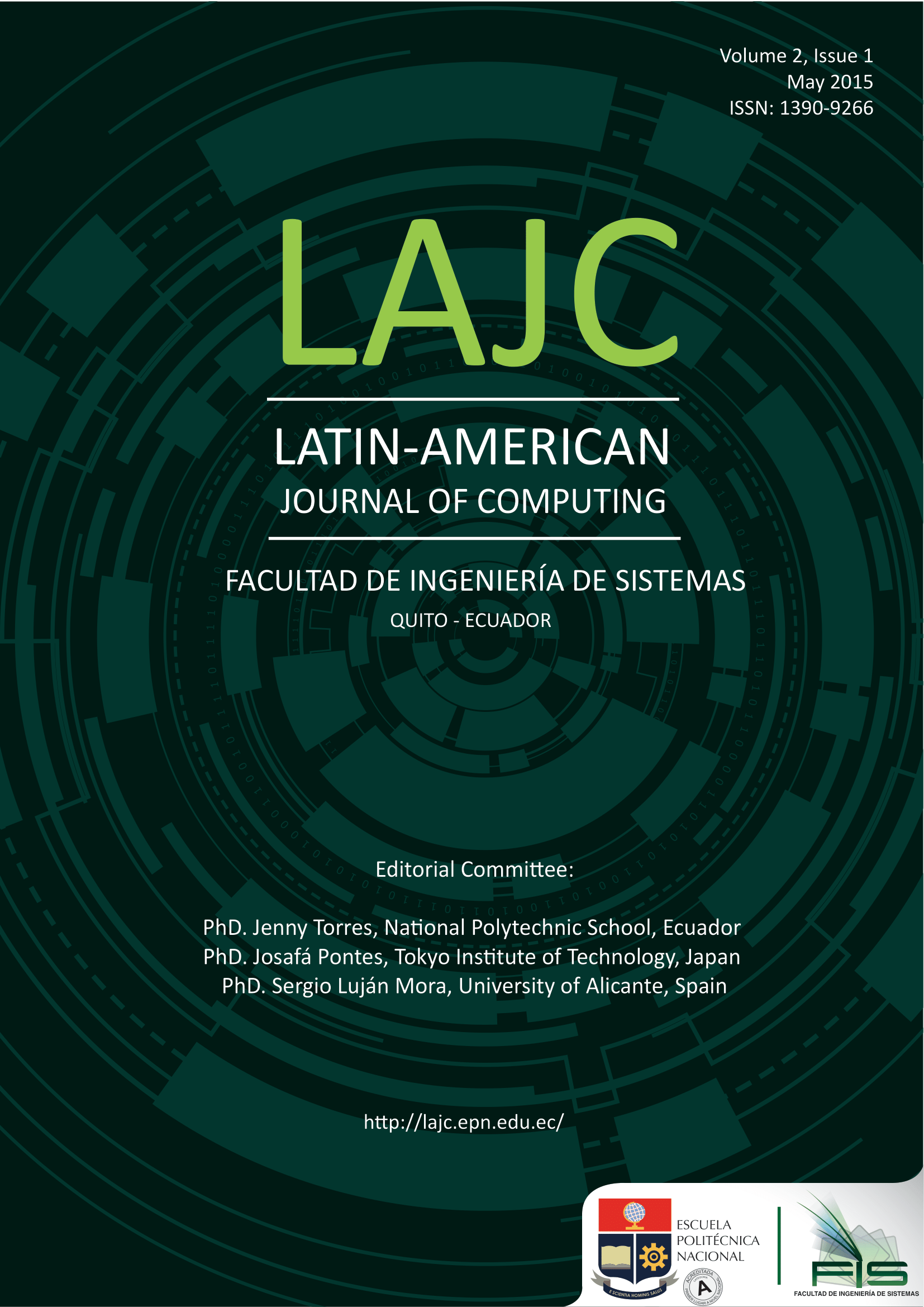Planning Model Proposal for Implementation of Technological Service Centres in Public Education
Keywords:
Design, Education, Implementation, Information Technology, Model Town, Public Educational Institution, Services, Strategy, Technology Service CenterAbstract
TIC provides the opportunity to expand access to education, to strengthen digital education, and to raise the quality of education, to allowing teaching and learning are ongoing, everyday process. However effectively integrate TIC in education is a complex process involving review of curriculum and pedagogy, teaching skills and financing.
In Ecuador experienced us a technological advance, particularly for access to information and communication. In the last decade the extent of the Internet allows TIC reach their highest popularity this without even enough.
In order to reduce the lack of TIC mainly in the school-age population propose a logical design model for the Technology Services Center (TCS) approach would aim to provide technological benefits to student population.
Downloads
References
Aguirre, P. D. (2012). Texto comentado a la Constitución de la República del Ecuador. Loja, Loja, Ecuador: DYKINSON, S.L.
UNESCO, Lugo María Teresa. (2011). La matriz TIC. Una herramienta para planificar las Tecnologías de la Información y Comunicación en las instituciones educativas. Buenos Aires: UNESCO.
SITEAL. (2011). Informe sobre tendencias sociales y educativas en América Latina. Buenos Aires: IIPE-UNESCO/OEI.
UNESCO. (2011). Informe de Seguimiento de la EPT en el Mundo 2011. Accedido 10-07-2013, desde UNESCO: www.efareport.unesco.org
UNESCO. (2011). Panorámica regional: América Latina y el Caribe. Informe de seguimiento de la EPT en el mundo 2011. París.
Ministerio de Educación. (2006). Documentos Legales y Normativos. Accedido 10-08-2013, desde www.educacion.gob.ec/documentoslegales-y-normativos/
Ministerio de Educación. (2006). Documentos Legales y Normativos. Accedido 10-08-2013, desde www.educacion.gob.ec/documentoslegales-y-normativos/
Instituto de aprendizaje abierto y a distancia (IDOL). (2014, Enero 19). Universidad de Mumbai. Accedido desde http://www.mu.ac.in/myweb_test/ma%20edu/ICT%20-%20Edu..pdf
AMIE Ministerio de Educación. (2013). Indicadores Educativos calculados con datos del Archivo Maestro de Instituciones Educativas (AMIE). Quito.
ROUSSOU, M. (2000). Immersive Interactive Virtual Reality and Informal Education", Proceedings of User Interfaces for All: Interactive Learning Environments for Children. Athenas: s/e.
Figueroa, E. C. (2003). Telecentros comunitarios. Cali: InforCauca.
Conectar la Escuela, Conectar una Comunidad. (2014, Julio 16). www.connectaschool.org
Mallalieu Kim, R. S. (2005). Selecting Sustainable ICT Solutions for Propoor Intervention. Trinidad and Tobago: Department Of Electrical And Computer Engineering The University Of The West Indies, St. Augustine.
SENPLADES. (2012). Secretaria Nacional de Planificación y Desarrollo. Recuperado 23-10-2013, desde http://www.planificacion.gob.ec/
PRIETO Paco, A. M. (2012). Telecentros 3.0 y la Innovación Social en la Sociedad Red. Andalucía: Guadalinfo.
Downloads
Published
Issue
Section
License
Copyright Notice
Authors who publish this journal agree to the following terms:
- Authors retain copyright and grant the journal right of first publication with the work simultaneously licensed under a Creative Commons Attribution-Non-Commercial-Share-Alike 4.0 International 4.0 that allows others to share the work with an acknowledgement of the work's authorship and initial publication in this journal.
- Authors are able to enter into separate, additional contractual arrangements for the non-exclusive distribution of the journal's published version of the work (e.g., post it to an institutional repository or publish it in a book), with an acknowledgement of its initial publication in this journal.
- Authors are permitted and encouraged to post their work online (e.g., in institutional repositories or on their website) prior to and during the submission process, as it can lead to productive exchanges, as well as earlier and greater citation of published work.
Disclaimer
LAJC in no event shall be liable for any direct, indirect, incidental, punitive, or consequential copyright infringement claims related to articles that have been submitted for evaluation, or published in any issue of this journal. Find out more in our Disclaimer Notice.










